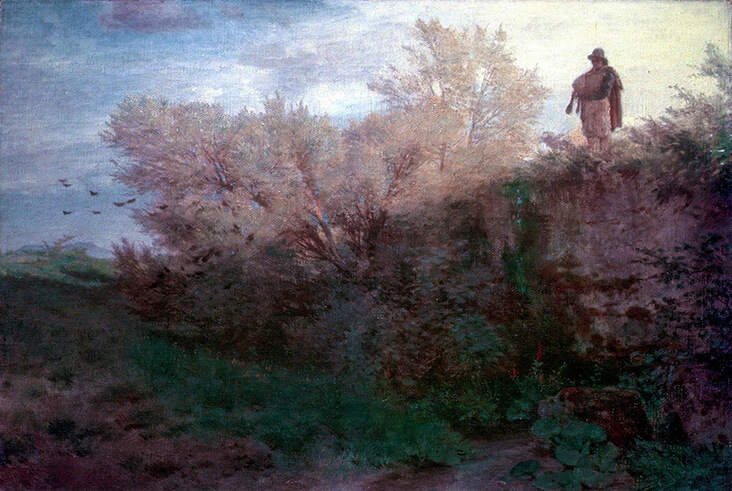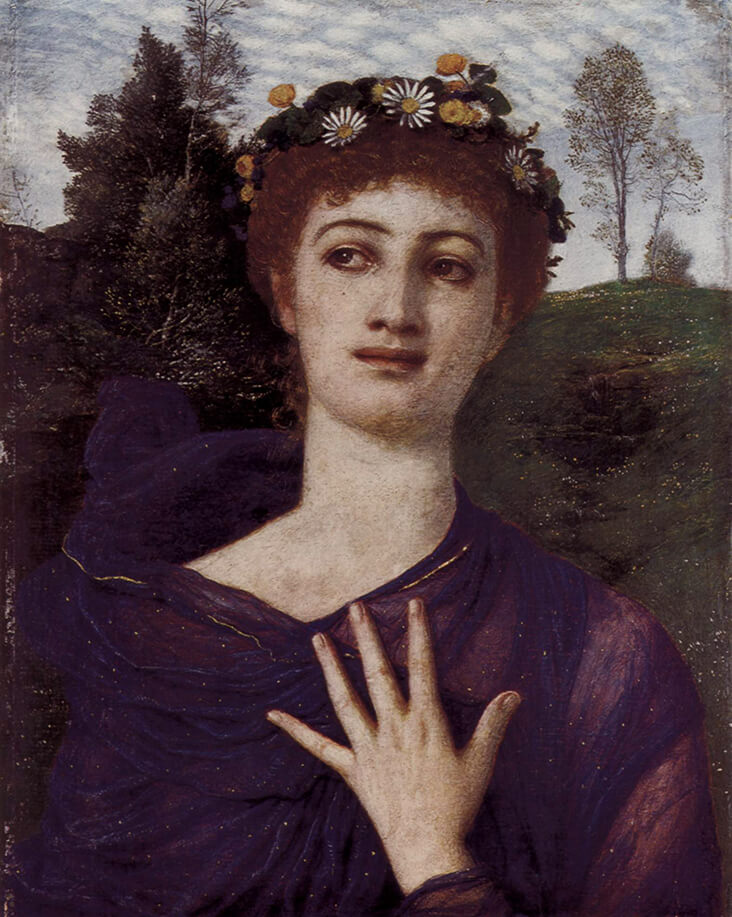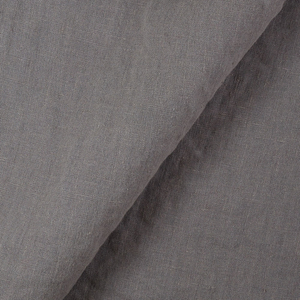FS Colour Series: SWEET GRAPE Inspired by Arnold Bocklin’s Inky Darkness
Eerie, enigmatic silence circulates through the art of Swiss Symbolist Arnold Bocklin, conveying brooding places hovering between the waking and dreaming worlds. Bocklin predominantly painted the rough and tumble of the wilderness with a hazy light, punctuated by vivid, inky passages of darkness in shades of blue and dark purple like SWEET GRAPE. This colour allowed him to bring quiet areas of shadow to life, investing them with an unfolding mystery, hinting at quiet narratives that we may never fully know.
Bocklin was born in Basel, Switzerland in 1827. His father was a silk trader who travelled widely, investing in Bocklin an early fascination with globetrotting. From 1845 to 1847 Bocklin studied painting at Dusseldorf Academy, where he was taught by several world-leading German Romanticist painters including Carl Friedrich Lessing and Johann Wilhelm Schirmer. The sublime landscapes of Caspar David Friedrich, with their high contrast drama also had a profound impact on the young Bocklin. In 1848, Bocklin travelled throughout Antwerp, Brussels and Paris, where he came into contact with a wider pool of art from all across Europe. Bocklin was particularly taken with the Realism of Barbizon painters including Jean-Baptiste Camille Corot, and his art of this time imitated their crisp depictions of reality.
In 1850 Bocklin travelled to Rome, where he was fascinated by the city’s ancient ruins and classical monuments, along with the mythological art of Renaissance masters. His art subsequently took another turn, this time blending old world ruins with subtle narrative references and the high contrast light of German Romanticism. His interests in landscape as a vehicle for exploring states of mind aligned Bocklin with the rising school of Symbolism that was sweeping across Europe. In The Bagpiper, 1861, Bocklin draws us into a quiet, contemplative scene, where a lone bagpiper plays his melody into the wide-open space before him. Backlit by white light, he becomes our central point of focus. Bocklin paints the bagpiper in a rich shade of purple that spills out into the shadowy landscape beyond, blending with the lush, cold green of the bristling leaves and undergrowth around it.
Many of Bocklin’s paintings from the 1870s align with the British Pre-Raphaelites, illustrating mythological characters and stories with a fresh new eye for the modern age. Spring was a recurring theme in Bocklin’s art during this decade, as inspired by Sandro Botticelli. In Spring, 1875, Bocklin’s mythological personification of spring – perhaps the ancient Greek Goddess Persephone – is adorned in sheer, swirling purple drapes, lending her a rare and enigmatic quality. Flowers are scattered throughout her hair, suggesting the onset of spring and its outpouring of fresh new growth.
Between 1880 and 1886, Bocklin embarked on his most important work to date, his timeless ‘Isle of the Dead’ series. Throughout these 6 years Bocklin painted 5 different artworks based around the same gothic island, hovering in an unknown stretch of glassy water. His Isle of the Dead from May 1886 was the final painting in the series, and by far the most abstract and expressive. Bocklin was commissioned to make this version of the Isle by the Museum of Fine Arts in Leipzig, demonstrating how successful and popular he had now become. As with all his Isle paintings, the same ghostly white figure seen here is taken on a journey into the dark cavern of the unknown island by a mysterious boatman. But in this particular artwork the sky is a darker and more intense shade of purple, sinking into a rich and inky mood of foreboding drama and turmoil, a fitting finale for one of the most celebrated series of paintings in the history of art.




















































Leave a comment